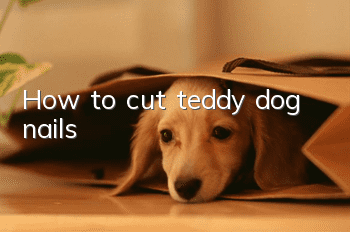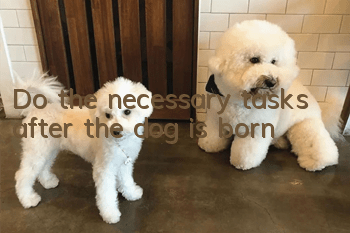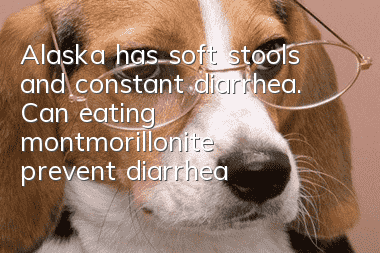How to choose a healthy purebred Labrador Retriever

The Labrador Retriever is a medium-to-large dog with a naturally gentle, lively, non-aggressive and highly intelligent dog breed. It is a dog breed suitable for being selected as a guide dog or other working dog, along with golden retrievers and huskies. One of the three non-aggressive dogs. Labradors are currently the most registered breed in the American Kennel Club.
1. General appearance and performance
The Labrador Retriever is a strongly built, medium-sized, somewhat short (described below) dog. He has a sound, agile and perfectly balanced structure, giving him the instinct to be a retrieving gun dog (Bird dog). He has the nature and temperament to hunt waterfowl or land prey for long periods of time in different environments. It also has traits and characteristics suitable for competition and a temperament that can serve as a family companion dog. These physical and psychological characteristics are suitable for breeding into a retriever with a stable temperament, sufficient to cater for tracking work in different hunting environments.
Some of the Labrador's most distinguished features are his short, dense, weather-resistant coat; an otter-like tail; a chiseled head with a broad skull and moderate forehead; and powerful strength. his jaw; and his friendly eyes, which convey his character, understanding, and excellent temperament.
Based on the above, a Labrador must be well balanced so that it can move effortlessly in the arena or while working in the fields. The appearance and quality displayed by a representative Labrador are cultured and elegant, but not bulky and vulgar in physical terms. The Labrador was originally bred as a gun dog, so its structure and health are of paramount importance.
2. Size, proportion and texture
Size - The height of a male dog is 22 and a half inches to 24 and a half inches (57.15cm~62.23cm) from the tip of the head,
Female dogs are between 21 and a half inches to 23 and a half inches (54.61cm~59.69cm). Any dog that is more than or less than half an inch (1.27cm) will be disqualified. The weight is allowed within the standard range: 65 to 80 pounds (29.51kg ~ 36.32kg) for male dogs; 55 to 70 pounds (24.97kg ~ 31.78kg) for female dogs.
The minimum height range mentioned in the previous paragraph does not apply to male or female dogs less than twelve months old.
Proportion - slightly short; means that for a single dog, it only means that his length is equal to or slightly longer than his height. The distance from the elbow to the ground and the distance from the elbow to the armor should be equal. The chest should extend to the elbows but should not be significantly deeper. The body must be long enough to permit free striding in a straight line and efficiently; but it should not be short or long or short.It has a tall and thin-legged appearance.
Texture - The meat and bones of the entire dog should be proportionate. Light and thin individuals are definite disadvantages; relative disadvantages refer to cumbersome and bulky individuals. Labradors should be well muscled in working condition and not overweight.
3. Head
Skull - The skull should be broad and well developed but not exaggerated. The skull and face (foreface or muzzle) should be on parallel planes of almost equal length, and there should be an appropriate forehead section. The forehead is slightly obvious, so the skull and the nose are not in a completely straight line. Then the brow bone helps to mark the forehead. The head should be chiseled and free of fleshy cheeks (chee ks); there should be no protrusions in the cheeks from the apparent skull structure below the eyes. The skull should have some midline (due to depression); in adult dogs, the occipital bone (occipi tal bone) is not obvious. The lips should not be droopy or too tight, but should extend toward the throat. Therefore, a dog with a wedge-shaped head or a head that is too long and the muzzle and backbone of the skull are too narrow is wrong, as is a dog with overly large cheeks. The jaw is strong and not rough; the muzzle is neither long and narrow nor short and thick.
Nose - The nose should be broad and the nostrils well developed. The nose color of black and yellow Labradors should be black; while the nose color of chocolate Labradors should be brown. Degraded nose color is a fault, and a nose that is completely pink or loses its true color is a disqualification.
Teeth - The teeth should be strong and normal, with a scissors bite, with the lower teeth set back but in contact with the inner edges of the upper teeth. Horizontal incisors are permitted but not preferred. Poor jointing or protruding upper and lower teeth are serious errors. It is best if the dentition is complete; missing molars or small molars is a serious fault.
Ears - The ears should hang moderately close to the head, slightly above eye level, and slightly below the skull, well set back. The ears should not be overweight or large, but should be proportionate to the skull and reach the inner rim of the eyes when drawn toward them.
Eyes - Eyes should be friendly, intelligent and alert, which is a registered trademark of Labrador. The eyes are of medium size, well set, neither bulging nor deeply sunken. Eye color should be dark brown in black or yellow dogs; light brown or brown eyes in chocolate. Black or yellow eyes that appear too dazzling are undesirable. Dogs with black and yellow eyes are black, while chocolate is brown. No color in the eye sockets is a disqualification.
4. Neck, topline and body
Neck - The neck should be of sufficient length to easily pick up prey. The neck should also be muscular, with strong shoulders and a moderate arch. A short, thick or ewe neck is a fault.
Topline - The back is strong. When exercising or standing, the topline is straight from the temples to the buttocks.Now level, however, the waist should exhibit elasticity for movement.
Body - The Labrador is somewhat short, with well-curved ribs that taper to a moderately broad chest. The Labrador should not have a narrow chest resulting in a hollow between the front legs, nor should it have an overly broad chest like a Bulldog. Proper chest structure is due to the end of the ribs between the forelegs allowing unrestricted swing of the forelimbs. Chest width that is too wide or too narrow is incorrect for efficient operation and kinetic energy. Individuals with flat chest sides are not typical of Labradors, and round and barrel chests are also not acceptable. The underline is almost straight, with some or no tapering in the adult dog. The loin should be short, broad and powerful, extending into well developed and powerful hindquarters. When viewed from the side, the forechest appears well developed, but not excessive.
Tail - The tail is a distinctive feature. It should be very thick at the base of the tail joint and gradually taper towards the end. It should be medium in length but no longer than the ankle joint. The tail should be free of long feathers and should be entirely covered with short, dense fur. As a result, this unique and perfect expression is known as the 'otter tail'. The tail should be level along the topline when quiet or when moving. It may convey excitement, but it should not be carried on the back. An extremely short or long thin tail is a serious fault. The tail is used to balance the line from the top of the head to the end of the tail. Tail docking or other errors that alter the length or nature of the tail will be disqualified.
- Diagnosis and treatment of dog fever
- What should I do if my pet dog is allergic to vaccines?
- How to brush your dog’s teeth? What should I do if my dog refuses to brush his teeth?
- What should I do if my dog keeps scratching and biting?
- What are the most common oral and dental diseases in dogs? Dog Oral Care!
- What are the training tips for Australian Cattle Dogs?
- Research shows that dogs raised in cities are more likely to develop social anxiety than dogs raised in rural areas
- How to train a Great Pyrenees
- Why do dogs sigh?
- What are the symptoms of dystocia in dogs, and what should I do if my dog has dystocia?



